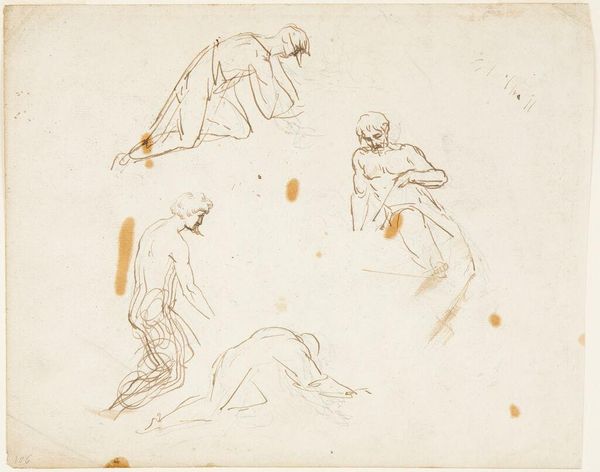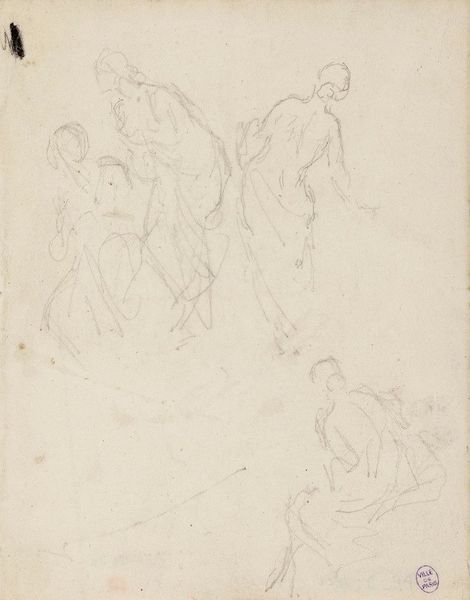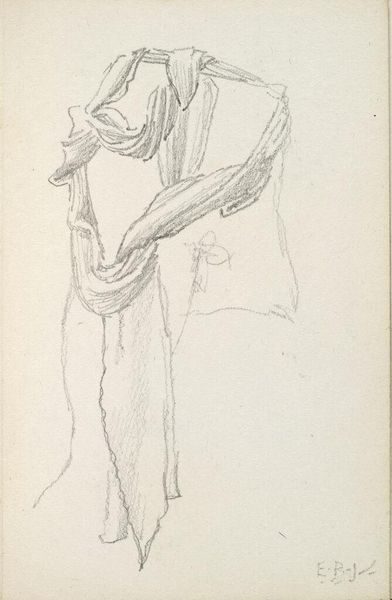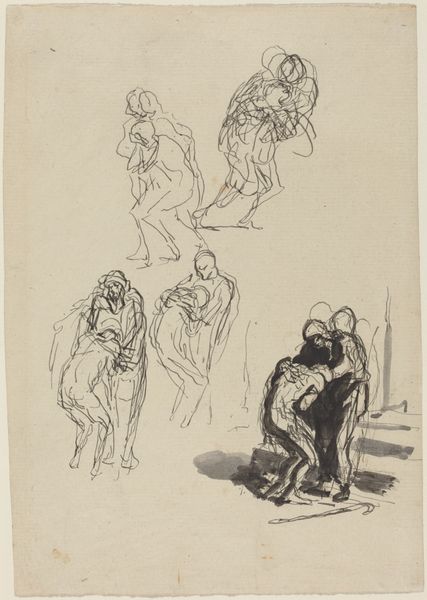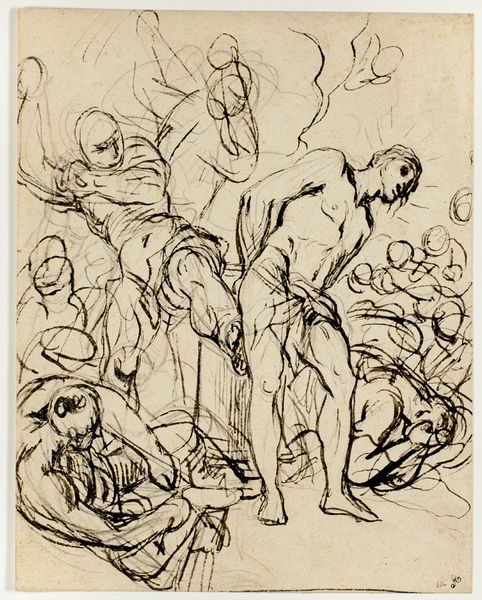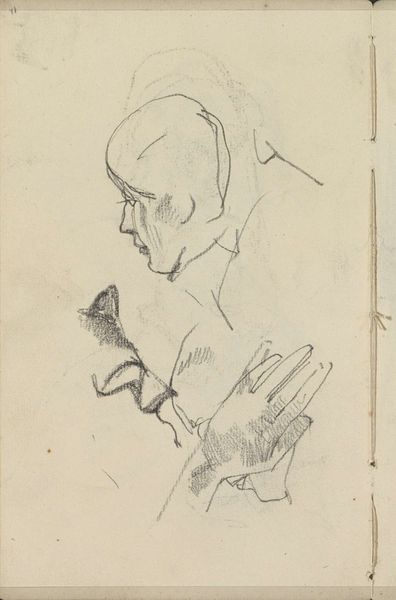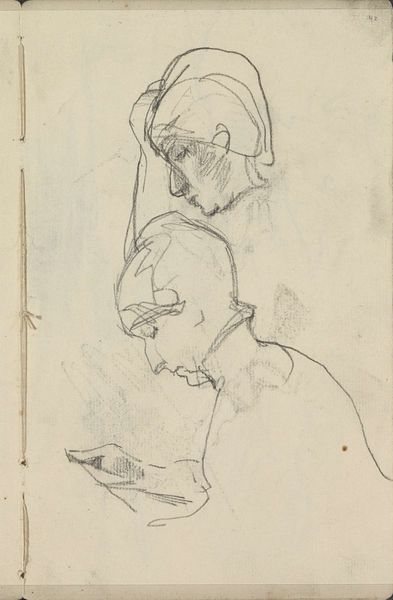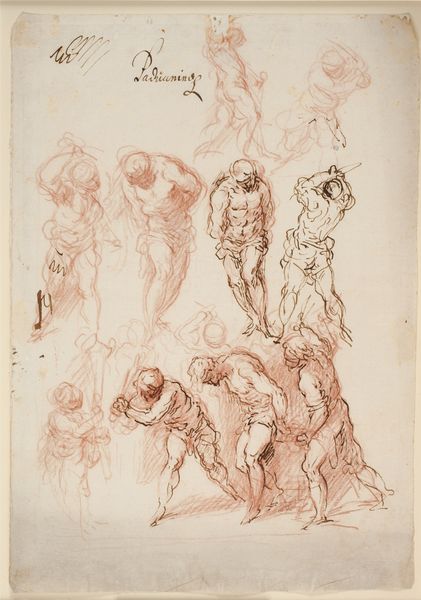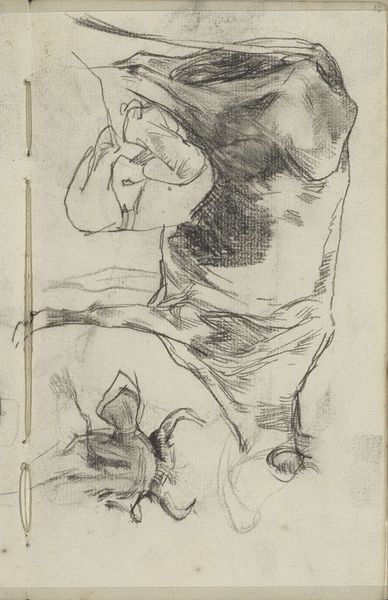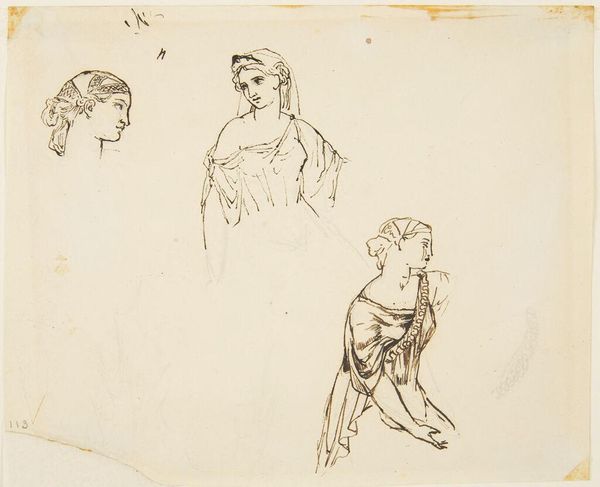
drawing, paper, ink
#
portrait
#
drawing
#
figuration
#
paper
#
ink
#
genre-painting
Dimensions: height 328 mm, width 245 mm
Copyright: Rijks Museum: Open Domain
Editor: So, this is "Studies van een dienstmaagd die de kachel pookt" – roughly, "Studies of a Maidservant Tending the Stove." It's an ink drawing on paper from somewhere between 1770 and 1825, by Simon Andreas Krausz. I’m really struck by how raw it feels; almost unfinished, yet full of movement. What stands out to you when you look at it? Curator: What captures me are the obscured faces, how they’re shrouded, suggesting not anonymity, but perhaps a meditation on social invisibility. Notice how her actions, though mundane—tending the stove—are imbued with a weight. Think about the cultural understanding of labor at the time. Do you sense any of that tension here? Editor: Definitely, I mean, there's a dignity in the work but also a kind of… suppressed narrative? I’m curious about the repetition of the figure. Why so many arms, so many hands all grasping the poker? Curator: That's precisely the point! Each limb acts as a visual echo chamber. It's less about simple representation, and more about emphasizing the cyclical, repetitive nature of her chore. These actions become ritualistic, charged with social meaning. The implement she uses also symbolizes warmth, the heart of the home, traditionally tied to feminine roles, though these may not be easily afforded to someone of a lower status. It almost suggests the warmth she creates, she does not receive. Does it speak to you on that level? Editor: Absolutely! It's like the drawing reveals layers of meaning through those repeated gestures. I didn’t think I would ever consider the social weight carried in an image of an ordinary woman tending a hearth! Curator: Precisely! Visual art allows us to look through layers of symbolism and see the continuity in cultural memory. Even what appears quotidian reveals a wealth of meaning when you dig a little deeper.
Comments
No comments
Be the first to comment and join the conversation on the ultimate creative platform.
